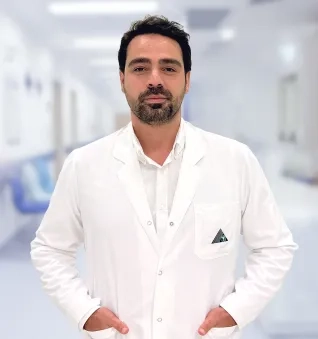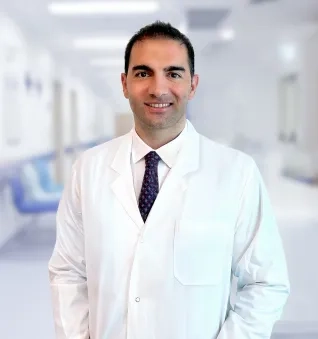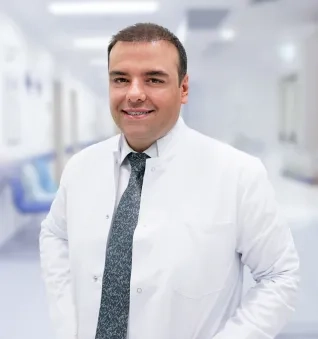Alo Yeditepe
Alo Yeditepe
Liver Cancer (Tumor) and Treatment
Yeditepe University Koşuyolu Hospital General Surgery Specialist answered the questions about Liver Cancer.
The liver is a ball-sized organ located in the upper right part of the abdomen, above the stomach, and below the diaphragm.
The liver's own tumors (primary) are malignant tumors arising from the tissue of the organ. The most common of these is hepatocellular carcinoma. This group accounts for about 90 percent of primary liver cancer cases. The remaining cases are tumors called cholangiocarcinoma, which mostly originate from the bile ducts in the liver.
However, cancers that start from different organs of the body such as the colon, lung, or breast, and spread to the liver, which are defined as metastatic cancer, are also quite common. This type of metastatic cancer occurs more commonly than cancers that begin in liver cells. The liver acts as a factory in our body. Since all the blood is collected in the liver, if there is a tumor in any organ, it reaches the liver through the vessels and can lead to metastasis in the liver.
Liver cancer, which is cancer that occurs in liver cells, does not appear suddenly, as in other types of cancer. Some factors trigger the formation of primary liver cancer. Of these factors, especially cirrhosis is very important. People with cirrhosis are 300 times more likely to experience liver cancer than those without cirrhosis.
Are There Risk Factors for Liver Cancer?
Some factors increase the risk for cancers that occur after DNA changes in liver cells, which are defined as primary liver cancer. These are:
- Cirrhosis is one of the most effective risk factors in the formation of liver cancer. Cirrhosis, a progressive and irreversible condition, causes scar tissue to form in the liver and subsequently increases the risk of developing cancer.
- Chronic liver infections such as hepatitis B or hepatitis C are among the factors that increase the risk.
- Having some hereditary liver diseases such as Wilson's disease also creates a risk for liver cancer.
- People who have fatty livers are also more likely to develop liver cancer regardless of alcohol consumption.
- Excessive alcohol consumption over many years.
What Are the Symptoms of Liver Cancer?
Liver cancer/tumor may not cause any complaints initially. When symptoms occur, the patient complains of:
- Involuntary weight loss
- Abdominal bloating
- A general feeling of weakness and fatigue
- Yellowing of the eyes in more advanced stages
- Nausea and vomiting
However, sometimes liver cancer can be seen without any complaints. For this reason, it is necessary to consult a physician without wasting time when any symptoms or complaints that may cause suspicion are encountered.
Who Experiences Liver Cancer?
- Alcohol users
- Hepatitis B and Hepatitis C patients
- Chronic liver patients
- Those with a family history of liver cancer are at risk.
Does Liver Cancer Proceed Insidiously?
Unfortunately, liver cancer is a disease that does not show symptoms in the early stages and progresses insidiously. It takes years for hepatitis B to evolve into cirrhosis. However, although cirrhosis is an irreversible disease, its progression can be prevented. However, it should not be forgotten that if not prevented, it can also lead to cancer in the liver.
How to Diagnose Liver Cancer?
Diagnosis of liver cancer usually occurs during regular check-ups of high-risk patients. In addition, when many patients consult a physician due to the symptoms of the disease, the diagnosis is finalized after blood tests, ultrasonography, computed tomography, magnetic resonance, and alpha-foetoprotein tests are performed.
How to Treat Liver Cancer?
There are many different methods for the treatment of liver cancer. Among these, the primary and most effective way is surgery. The part of the liver containing the tumor where the disease occurs is surgically removed. Liver transplantation may also be considered. Chemotherapy, radiotherapy, ablation therapy in which the tumor is burned or nuclear medicine treatments with microspheres can be used in patients who cannot undergo surgery.
What are the Benefits of Closed Surgery for Liver Cancer to the Patient?
Today, most liver surgeries are performed laparoscopically. This method not only shortens recovery times compared to open surgeries performed in the past but also eliminates the necessity of wearing a corset or girdle after surgery. Return to daily life is faster after laparoscopic surgeries. Even light physical activities (such as walking, and climbing stairs) can be done easily at the end of the first week.
What Should Be Done to Prevent Liver Cancer?
It is important to control risk factors as much as possible in order to prevent liver cancer. These are:
Reduce your risk of cirrhosis: In order to prevent cirrhosis, which is one of the most important risk factors for liver cancer, it is necessary to limit alcohol consumption first. However, it is important to control weight, get rid of excess weight, and exercise.
Get vaccinated against hepatitis B: It is possible to reduce the risk of hepatitis B by getting vaccinated. The Hepatitis B vaccine can be administered at almost any age.
Unfortunately, it is seen that most of the patients over the age of 30 who consulted a physician with the complaint of cirrhosis have not had the hepatitis B vaccine. For this reason, the hepatitis B vaccine should indisputably be administered to the entire community.
Take precautions against hepatitis C: Although there is no protective vaccine for hepatitis C, it is possible to reduce the risk by taking precautions. Be informed about the health status of the sexual partner and always use a condom during sexual intercourse. If you are considering getting a tattoo or piercing, choose safe and hygienic places, as unsterilized needles can be dangerous for the Hepatitis C virus.
If you are in the risk group, do not neglect your regular health check-ups.
If complaints such as involuntary weight loss, weakness, fatigue, decreased appetite, nausea and vomiting, abdominal pain and swelling in the upper right, yellowing of the skin and whites of the eyes (jaundice), or white, light-colored stool and dark-colored urine are observed, a specialist physician should be consulted without delay.
This content was prepared by Yeditepe University Hospitals Medical Editorial Board.
”
See Also
- Fall from Height Led to Kidney Failure, Saved by Sister's Donation
- What is a Liver Transplant, How is it Done? and Who is it For?
- Journey of Hope from Georgia to Turkey: 63-Year-Old Father Donates Kidney to Son
- Does Secondhand Smoke Increase the Risk of Breast Cancer?
- What is Laparoscopic Reflux Surgery and How is it Performed?
- Birthday Gift Becomes a Gift of Life: Kidney Donation from Husband of 20 Years
- Can Liver Cancer Be Prevented?
- Revision Surgery in Obesity Surgeons
- Common Misconceptions About Kidney Transplantation
- 19 Years Old Davut MİNAZ, Who Lost 45 Kilos in 4 Months, Clung to Life with His Father's Kidney
- What are the Problems Requiring Gallbladder Surgery?
- Gallbladder Surgery is a Necessity, Not a Choice
- What is Organ Donation?
- What is Gallbladder Surgery?
- Colorectal Cancers and Treatment Methods
- Patched Solution for Umbilical Hernia
- What are the Symptoms and Treatment Methods of Cirrhosis?
- Breast Cancer Diagnosis and Treatment Methods
- Swallowable Gastric Balloon
- What Are the Symptoms of Gallbladder Stones? How Is It Treated?
- 3 Major Developments Shaping Treatment in Colon Cancer
- Can Weight Loss Despite Not Dieting Be a Sign of Cancer?
- The Biggest Obstacle to Early Diagnosis of Breast Cancer: LACK OF INFORMATION
- Serious Risk Factor for Colon Cancer: Heredity
- He Came to Turkey to Get Rid of the Colostomy Bag
- Breast Protective Surgery Is Not Recommended in the Treatment of Multifocal Breast Cancer
- Does Breast Cancer Risk Decrease During Pregnancy and Breastfeeding?
- Breast Cancer Incidence Age Is Decreasing Day by Day
- Early Detection Is Cancer's Most Powerful Enemy
- Breast Cancer Has Dethroned Lung Cancer for The First Time! But, Why?
- Emotional Stress May Affect Risk of Recurrence in Breast Cancer
- Although Her Fears Prevented Her from Going to the Hospital, She Managed to Beat Breast Cancer at the Age of 70
- Age of Breast Cancer Prevalence Falls, yet Mortality Declines
- Breast Cancer Screening Applications Decreased by 10% Before the Pandemic
- Facts About Breast Cancer
- Gallbladder Stones
- What Is Appendicitis?
- What is a Kidney Transplant?
- Hemorrhoid Treatment
- Questions About Gastroenterology Surgery
- Surgery for Breast Cancer and Breast Aesthetics Can Be Performed Simultaneously
- What are the Types of Obesity Surgeries?
- Questions About Obesity Surgery
- A New Era in Obesity Surgery
- Overweight
- Are Obesity Surgeries Risky?
- New Study Surprised: “Mortality Increased in Breast Cancer Cases Under the Age of 40”
Alo Yeditepe










